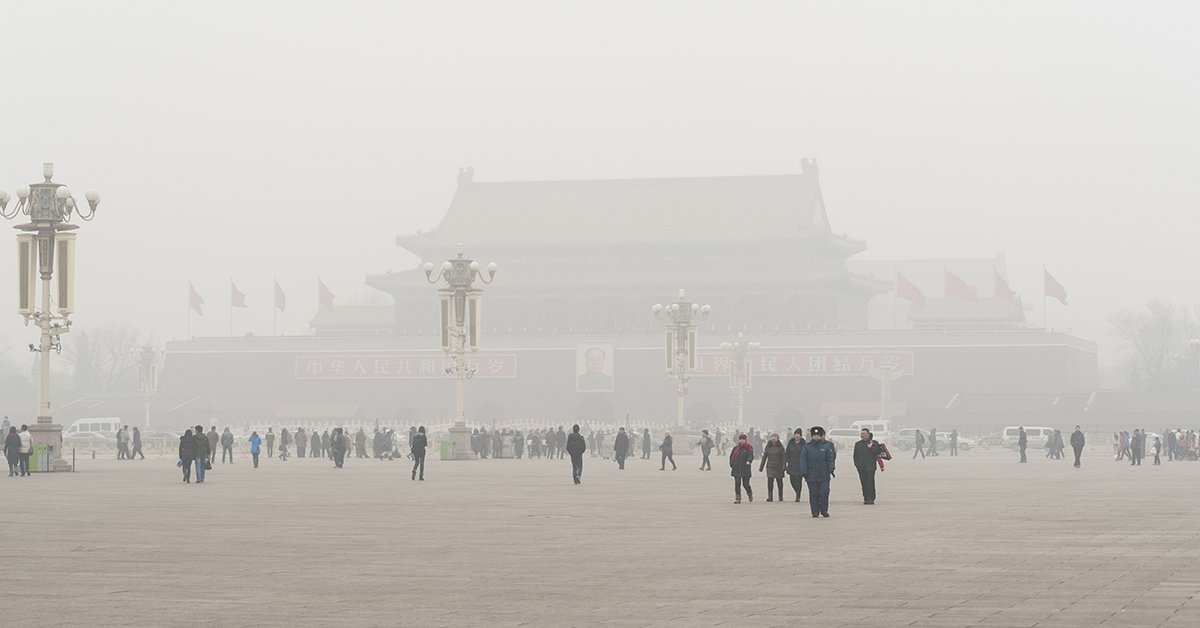China has stunned the world by making a sharp U-turn and replacing its draconian ‘Zero-Tolerance’ COVID policy, implemented since 2020, with a ‘Zero-Control’ policy announced just before the New Year 2023. One wonders how and why such a total change of heart by China’s leadership was possible. The answer seems to be: ‘It’s the economy, stupid!’, citing James Carville (or Donald Trump decades later).
Our first observation is that China’s GDP growth performance slowed down a decade prior to 2019/20 when the Covid crisis began. China’s last double-digit growth appeared in 2010 (10.6%) after which the publicised GDP growth (with or without a pinch of salt given the opaque nature of China’s data) went downhill. Figure 1 takes the face value of the publicised data with the three-year moving average (commonly used to show a trend). From 2009 to 2019, China’s GDP growth declined by a massive 34%, not trivial considering China’s full-swing WTO membership and its economic honeymoon with the G7 group of the time. When the Covid mayhem is included, the general trend stays the same (despite a negligible dip in 2020). In other words, in 2021 and 2022, China’s publicised GDP is consistent with the country’s ‘new norm’ of economic slowing down.
Figure 1. China’s Annual GDP Growth, three-year moving average, 2009-2020 (Source: World Bank)
In such a context, the issue of whether China’s economic growth will recover in 2023 seems less relevant as far as China’s long-term growth trajectory is concerned.
On the other hand, though, there is still a ‘fantasy issue’ of whether or not China is capable of repeating the ‘good old days’ of double-digit GDP growth in the future. The answer seems to be overwhelmingly negative. First of all, by 2018 the real engine of China’s growth had become the private sector, the stylised facts being that it paid 50% of all business taxes; it contributed 60% of the GDP; it made up 70% all technological innovations; it created 80% of urban jobs; and it counted for 90% of all registered companies. Unfortunately, this sector was unsupported during the Covid years. As far as one can tell, China has had no furlough scheme for the private sector or self-employed individuals since 2019. As a result, a large number of private businesses have simply gone bust: In the first half of 2020, a total of 460,000 private companies went under. A year later in 2021, that number increased to 4,370,000 in a 9.5-fold jump. In 2022, another 3,500,000 private businesses stopped trading. The cumulative number is well over 8 million private enterprises, or a third of China’s total. The recovery of the private sector will take years.
Secondly, with the frail private sector, China’s urban unemployment rate has reached a double-digit level for the first time since Mao’s Cultural Revolution (1966-76), which is the opposite face of the same coin of China-wide business failures. Given the fact that China has (1) a negative birth rate and (2) a fast-ageing population for retirement, the labour market would have an increasing demand and thus less unemployment. So, China’s current double-digit unemployment can only be attributed to an economic crisis. The implication here is profound: unemployment (together with negative birth rate and fast ageing) means an inevitable decline in China’s aggregate consumer demand which in turn makes both ‘land-lease-dependent’ government finance from the housing market and government promoted ‘internal circulation’ (nei xunhuan) unworkable.
Last but not the least, the ongoing decoupling with the G7 economies does not show any sign of reversal. As a matter of fact, widespread business failures and high unemployment are symptoms of such decoupling. Here, China does not seem to be in control because of the issues of national sovereignty and reciprocity reinforced by China’s trading partners.
Now, looking forward, sadly, China’s economic growth recovery in 2023 looks bleak.
This article gives the views of the author, and not the position of the China Foresight Forum, LSE IDEAS, nor The London School of Economics and Political Science.
The blog image was generated by DALL-E 2.






And the property crisis persists, and stimulus measures are only likely to add to the debt burden and local government fragility. Plus negative demographics and US tech sanctions. All in all, not a rosy outlook only a few months on from the Party Congress.